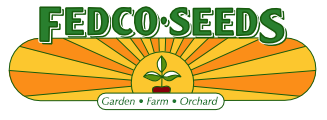Orchard Pest Management Jouranl
Super Chilly Farm 2015 (Central Maine)
Keep in mind that regional variations in disease prevalence, pest populations, and weather will and should influence your spray strategy. Consult your local extension office for timing specific to your location.
As an example for your reference, here is the pest management journal for an orchard in central Maine, Zone 5a.
| 5/17 | Holistic Orchard Spray—we missed the first spray, when the green leaf tips emerge! Sprayer troubles postponed us; also had to work this into our busy schedule. Most apples in pink. Plums in full bloom (didn’t spray plums). Some pears blooming—didn’t spray any open blooms. Didn’t spray any open apple blooms. Used Solo backpack sprayer (4-gal tank) because tractor sprayer wasn’t working. NOTE: for the first Holistic Orchard Spray of the season, double the amounts of each ingredient! |
| 5/19 | Hung white vinyl cards with Stiky Stuff for European Apple Sawfly. One card per bearing tree, per The Holistic Orchard, page 124, or The Apple Grower, page 153. |
| 5/23 | First Surround plus Kelp spray for Plum Curculio (almost all plum varieties had begun petal fall). Sprayed all plums and a few apple varieties that had reached petal fall. |
| 5/29 | Holistic Orchard Spray, plus Spinosad (for European Apple Sawfly), and light rate of Surround. Sprayed almost all the apple trees (almost all petals had fallen across varieties). |
| 6/2 | After 3 days of rain—total of 1½+ inches—it was time to re-establish the Surround plus Kelp coating. On the previous spray day (5/29), there were some trees we refrained from spraying with Spinosad, because they were not at complete petal fall and we didn’t want to endanger any pollinators. So, this time we started by spraying those trees that had been left out. |
| 6/6 | Surround plus Kelp spray for all fruiting apples and plums. |
| 6/14 | Last spring Holistic Orchard Spray aimed at leaf canopy and developing fruitlets. Added fermented herbal tea: Horsetail, Nettle, and Comfrey (if we were more disciplined, we’d have sprayed this tea every 10-14 days throughout the summer; also, adding garlic scapes enhances absorption). |
| 6/17 | Surround plus Kelp on plums and apples. |
| 6/21 | Hung Red Ball Traps with Stiky Stuff for Apple Maggot Fly. Three spheres per bearing tree. |
| 6/22 | Thinned apple crop. Left one fruitlet per cluster, though Michael Phillips recommends thinning more heavily (leaving 6–8" between fruitlets along the branch). |
| 6/24 | Last Surround spray, plus Kelp. |
| 6/29 | Hunting for Roundheaded Apple Borer in all young apple trees, found borers in ~15% of young trees. Used Michael Phillips’ recommended 1% Neem Oil drench spray on all young apple trees for management of borers; plus Kelp . To achieve 1% concentration, ratio is 5 fl oz Neem Oil/4 gallons of spray. |
| 7/4 | 1st round of Bacillus thuringiensis (Bt) spray for Codling Moth. Included 0.5% Neem Oil (recommended by Michael Phillips to help manage Codling Moth), and MilStop for Sooty Blotch and Flyspeck, plus Kelp. |
| 7/9 | 2nd round Bt spray for Codling Moth. Did not include MilStop, Neem Oil, or Kelp in this 2nd round because they have longer residual effects and they are more expensive than Bt. |
| 7/16 | Spinosad for Apple Maggot Fly and end of Codling Moth cycle. Included MilStop and Kelp. |
| 8/1 | 2nd round Spinosad. Included MilStop and Kelp. |
| 8/3 | 2nd round of 1% Neem Oil plus Kelp spray on all new trees (for Roundheaded Apple Borers, as on 6/29). |
| 9/1 | Spot-sprayed Bt plus Kelp on Fall Webworm nests. In a separate tank mix, we sprayed Sulfur on bearing limbs of plum trees to stop the spread of Brown Rot on the fruit. |
| Post-harvest, after more than 50% of leaves have fallen: Fish Hydrolysate, Neem Oil, and EM-1. Sprayed the trees, and also aimed at the ground to help speed leaf decomposition. | |

